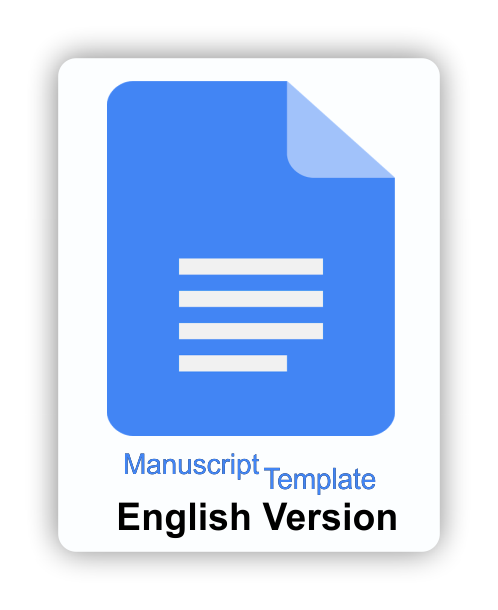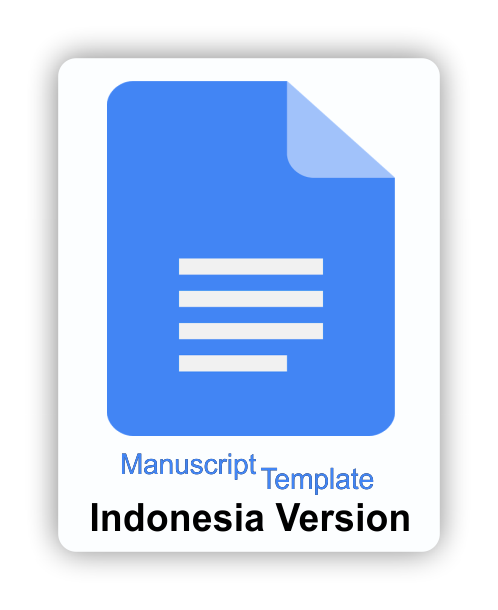How STEAM is a Chemistry textbook for class XI of a public high school in Surakarta
Sri Retno Dwi Ariani, Universitas Sebelas Maret, Indonesia
Mohammad Masykuri, Universitas Sebelas Maret, Indonesia
Abstract
This study aims to analyze the content of the STEAM aspect in the chemistry textbook for class XI. The research method used is descriptive qualitative. Data collection in this study used content analysis techniques. The sampling technique used is purposive sampling. The data sources used are the Chemistry Book for SMA/MA Class XI Specialization in Mathematics and Natural Sciences published by Erlangga in 2016 as book A, Experiment-based Chemistry Student Book published by Tiga Serangkai in 2014 as book B, and Chemistry Student Books for SMA/MA Class XI publisher Intan Pariwara in 2016 as book C. Basic Competencies analyzed in the three books, namely Hydrocarbon Compounds and Petroleum represent KD which are conceptual-theoretical, Reaction Rate represents KD which is mathematical, and Chemical Equilibrium represents KD which is abstract-complex. The results showed that books A, B, and C already contained all aspects of STEAM in various basic competencies. The contents of STEAM aspects in book A are 80 statements, book B are 85 statements, and book C are 121 statements. In Books A and C, the aspects of STEAM that are mostly covered are the mathematical aspects, while the aspects that are mostly published in Book B are the science aspects. The aspects of STEAM that are least contained in books A and B are the artistic aspects, while in book C are the technical and artistic aspects. Thus, in books A, B, and C, the artistic aspect has a low amount of load. Research on the content of STEAM and HOTS aspects needs to be carried out in more depth with a different approach regarding the integration of STEAM and HOTS aspects, especially in textbooks and other learning resources.
Keywords
Full Text:
PDFReferences
Agnezi, L. A., Khair, N., & Yolanda, S. (2019). Analisis sajian buku ajar fisika sma kelas x semester 1 terkait komponen science, technology, engineering, mathematics (stem). Jurnal Eksakta Pendidikan, 3(November). https://doi.org/10.24036/jep/vol3-iss2/388
Apriliana, M. R., Ridwan, A., Hadinugrahaningsih, T., & Rahmawati, Y. (2018). Pengembangan soft skills peserta didik melalui integrasi pendekatan science, technology, engineering, arts, and mathematics (steam) dalam pembelajaran asam-basa. Jurnal Riset Pendidikan Kimia, 8(2), 42–51. https://doi.org/10.21009/JRPK.082.05
Asrizal, A., & Dewi, W. S. (2018). A development assistance of integrated science instructional material by integrating real world context and scientific literacy on science teachers. Pelita Eksakta, 1(2), 113. https://doi.org/10.24036/pelitaeksakta/vol1-iss02/35
Awaliyah, C. Y. R., Feronika, T., & Agung, S. (2015). Analisis pertanyaan pada buku teks kimia berdasarkan question category system for science (qcss). Edusains, 7(1), 48–56. https://doi.org/http://dx.xoi/10.15408/es.v7iil.2035
Bruton, R. (2017). Stem education policy statement 2017-2026. Irlandia: Departement Education and Skill, Irlandia
Fazri, F., & Asikin, M. (2022). Kelayakan bahan ajar inovatif berbasis steam pada materi segiempat dan segitiga. Prisma, Prosiding Seminar Nasional Matematika, 5, 512–519.
Katz-Buonincontro, J. (2018). Gathering ste(a)m: Policy, curricular, and programmatic developments in arts-based science, technology, engineering, and mathematics education introduction to the special issue of arts education policy review: Steam focus. Arts Education Policy Review, 119(2), 73–76. https://doi.org/10.1080/10632913.2017.1407979
Mu’minah, I. H., & Suryaningsih, Y. (2020). Implementasi steam (science, technology, engineering, arts and mathematics ) dalam pembelajaran abad 21. Jurnal Bio Educatio, 5(April), 65–73.
National Art Education Association (NAEA). (2016). Using art education to build a stronger workforce. https://www.arteducators.org/advocacy-policy/articles/226-using-art-education-to-build-a-stronger-workforce-case-statement
Nuraeni, S., Feronika, T., & Yunita, L. (2019). Implementasi self-efficacy dan keterampilan berpikir kritis siswa pada pembelajaran kimia di abad 21. Jambura Journal of Educational Chemistry, 1(2), 49–56. https://doi.org/10.34312/jjec.v1i2.2553
Nurhikmayati, I. (2019). Implementasi steam dalam pembelajaran matematika. Jurnal Didactical Mathematics, 1(2), 41–50.
Permanasari, A. (2016). Stem education : Inovasi dalam pembelajaran sains. Seminar Nasional Pendidikan Sains “Peningkatan Kualitas Pembelajaran Sains dan Kompetensi Guru melalui Penelitian & Pengembangan dalam Menghadapi Tantangan Abad-21” Surakarta, 22 Oktober 2016, 23–34.
Purnamasari, I., Handayani, D., & Formen, A. (2020). Stimulasi keterampilan hots dalam paud melalui pembelajaran steam. Prosiding Seminar Nasional Pascasarjana UNNES, 3(1), 507–516. Retrieved from https://proceeding.unnes.ac.id/index.php/snpasca/article/download/614/533
Putri, R. R., Ahda, Y., & Rahmawati, D. (2018). Analisis aspek kemampuan berpikir tingkat tinggi pada instrumen penilaian materi protista untuk peserta didik sma / ma kelas x aspect analysis in higher order thinking skills on the evaluation instrument of protist topic for the grade 10 senior h. Jurnal Biodik, 4(1), 8–17.
Prakoso, S. D. (2021). Analisis konten komponen steam (science, technology, engineering, arts, and mathematics) pada buku teks kimia kelas x materi larutan elektrolit dan non elektrolit di sma negeri surakarta [Skripsi, Universitas Sebelas Maret Surakarta]. UNS Digital Library. https://digilib.uns.ac.id/dokumen/detail/84994/Analisis-Konten-Komponen-STEAM-Science-Technology-Engineering-Arts-and-Mathematics-pada-Buku-Teks-Kimia-Kelas-X-Materi-Larutan-Elektrolit-dan-Non-Elektrolit-di-SMA-Negeri-Surakarta
Ramli, & Pratiwi, Y. (2019). Analisis kebutuhan pengembangan buku siswa berbasis pendekatan stem pada pembelajaran fisika dalam menghadapi era revolusi industri 4.0. Jurnal Penelitian Pembelajaran FIsika, 5(2), 89–96.
Revee, E.M. (2015). Science, technology, engineering, & mathematics is here to stay. Thailand: Utah State University
Sa’ida, N. (2021). Implementasi model pembelajaran steam pada pembelajaran daring. Jurnal Review Pendidikan Dasar : Jurnal Kajian Pendidikan Dan Hasil Penelitian, 7(2), 123–128. Retrieved from https://journal.unesa.ac.id/index.php/PD/article/view/13955
Swaminathan, S., & Schellenberg, E. G. (2015). Current emotion research in music psychology. Emotion Review, 7(2), 189–197. https://doi.org/10.1177/1754073914558282
Usman, E. A., Asrizal, & Kamus, Z. (2017). Pengembangan lks ipa terpadu mengintegrasikan literasi saintifik pada materi gerak dalam kehidupan untuk siswa kelas viii smp. Pillar of Physics Education, 9(April), 25–32.
Wijaya, E. Y., Sudjimat, D. A., & Nyoto, A. (2016). Transformasi pendidikan abad 21 sebagai tuntutan. Jurnal Pendidikan, 1, 263–278. Retrieved from http://repository.unikama.ac.id/840/32/263-278 Transformasi Pendidikan Abad 21 Sebagai Tuntutan Pengembangan Sumber Daya Manusia di Era Global .pdf. diakses pada; hari/tgl; sabtu, 3 November 2018. jam; 00:26, wib.
Yuanita, & Kurnia, F. (2019). Analisis stem (science, technology, engenering, and mathematicss) materi kelistrikan pada buku tematik tema 3 kelas 6 sekolah dasar. Prosiding Simposium Nasional Multidisiplin Universitas Muhammadiyah Tangerang, 1, 1–8. Retrieved from http://jurnal.umt.ac.id/index.php/senamu/article/view/2174/1343
DOI: https://doi.org/10.21831/jitp.v10i1.52018
Refbacks
- There are currently no refbacks.
Copyright (c) 2023 Durrotunnisa Fathia Rahma

This work is licensed under a Creative Commons Attribution-ShareAlike 4.0 International License.
Our journal indexed by:
View Journal Statistics


















.png)